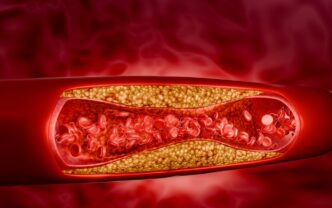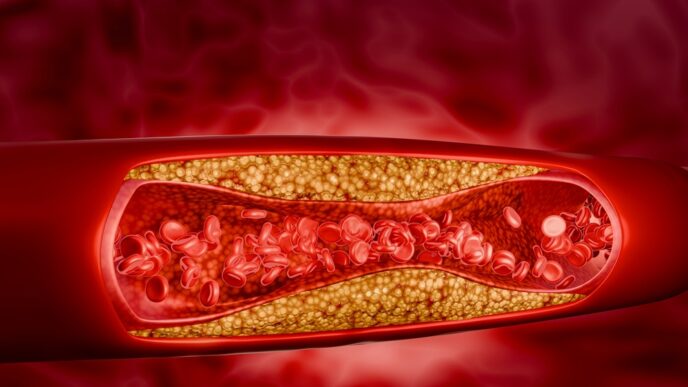Carpal tunnel syndrome creeps up quietly but can sabotage your hands and wrists before you know it. Often called the “wrist killer”, this common yet overlooked condition can cause pain, numbness and weakness — but with early action, you can stop it from stealing your grip on life.
WORDS LIM TECK CHOON
 FEATURED EXPERT FEATURED EXPERTDR RAYMOND YEAK DIEU KIAT Consultant Orthopaedic, Trauma and Sports Surgeon Sunway Medical Centre Velocity |
Carpal tunnel syndrome is a condition that causes numbness, tingling, and weakness in the hand and arm.
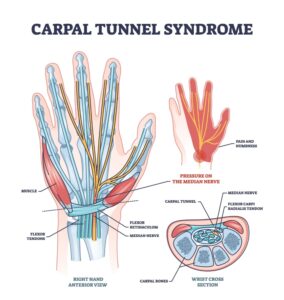
- What happens is that a space in the wrist, called the carpal tunnel (see image above) experiences increased pressure that squeezes or compresses the median nerve.
- If not treated, the pressure on the carpal tunnel may increase over time, leading to damage in the median nerve and worsening of symptoms.
You May Have Carpal Tunnel Syndrome if You Experience…
- Numbness, tingling, burning, and pain, often in the thumb and index, middle, and ring fingers.
- Shock-like sensations that “burn” to the thumb and index, middle, and ring fingers.
- Pain or tingling that travels up the forearm to the shoulder.
- Weakness and clumsiness in the hand.
Risk Factors for Developing Carpal Tunnel Syndrome
- Family history.
- Repetitive hand action over prolonged periods of time.
- Activities that involve extreme flexion or extension of the hand and wrist over a prolonged period.
- Rheumatoid arthritis.
- Thyroid hormone imbalance.
WHY DO SOME PEOPLE DEVELOP CARPAL TUNNEL SYNDROME?
Dr Raymond Yeak Dieu Kiat shares that studies on carpal tunnel syndrome reveal an association between it and our daily activities, but there is more to this than meets the eye.
We used to think that it’s only caused by excessive typing on the keyboard, but research suggests that it is also linked to certain medical conditions.
“Conditions such as joint or bone diseases, hormonal or metabolic changes, and fluctuations in blood sugar levels can also contribute to the development of carpal tunnel syndrome,” Dr Raymond reveals.
Inflammatory Arthritis

- This is a group of diseases in which the joints become inflamed due to the immune system mistaking joint tissues for foreign materials and attacking these tissues.
- Damage to joint tissues lead to stiff, painful, and limited movement of the affected joints.
- Examples of inflammatory arthritis include rheumatoid arthritis, psoriatic arthritis, and gout.
Diabetes
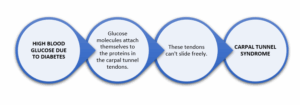
“Diabetes also can cause damage to the nerves or neuropathy, which means even a slight narrowing of the carpal tunnel can have a significant impact on people with this condition,” explains Dr Raymond.
TRIGGER FINGER
- People with carpal tunnel syndrome may also experience another condition known as trigger finger or stenosing tenosynovitis.
- It manifests as an uncomfortable clicking or catching sensation when opening and closing the fingers.
- It can lead to one or more thumb or fingers to become stuck in a bent position.
WHY ARE WOMEN MORE SUSCEPTIBLE TO CARPAL TUNNEL SYNDROME?
 FEATURED EXPERT FEATURED EXPERTDR MARIA SHELYNN WONG Consultant Orthopaedic, Trauma, and Paediatric Orthopaedic Surgeon Sunway Medical Centre Velocity |
Pregnant women are especially vulnerable to developing carpal tunnel syndrome.
Dr Maria Shelynn Wong tells us, “During pregnancy, every expectant mother experiences a doubling of their blood volume.”
This sets in motion in a chain of events as described that can lead to the woman developing carpal tunnel syndrome:
- A pregnant woman’s blood volume increases.
- This can cause increased swelling in her blood vessels.
- Such swelling increases the pressure within the carpal tunnel region.
- Her median nerve is compressed.
- This can give rise to carpal tunnel syndrome.
Fortunately, Dr Maria shares that the symptoms of carpal tunnel syndrome usually go away after childbirth, when the mother’s fluid levels return to normal and hence the pressure on the median nerve is also back to normal.
Nonetheless, she advises pregnant mothers to consult a doctor if they experience carpal tunnel like symptoms in their hands.
WHAT CAN THE DOCTOR DO ABOUT MY CARPAL TUNNEL SYNDROME?
Step 1: Examination and Diagnosis
- The doctor records your symptoms and medical history.
- The doctor then examines your hand and wrist.
- The doctor performs some physical tests, such as:
- Pressing down or tapping along the median nerve on the palm side of the wrist and hand for signs of tingling in the fingers (Tinel’s sign).
- Bending and holding the wrists in a flexed position to look for numbness or tingling in the hands.
- Lightly touching the fingertips and hands with a special instrument while the patient’s eyes are closed—this is to test the sensitivity in those areas.
- Examining the base of the thumb for muscle weakness and signs of muscle shrinkage (atrophy).
- The doctor may order electrophysiological tests such as nerve conduction studies as well as imaging tests (ultrasound, X-ray, etc).
Step 2: Consider The Appropriate Treatment Options
Dr Raymond explains that treatment options are tailored to each individual case, but splinting is usually the first option considered.
This involves the use of a neutral wrist splint with a metal bar to restrict wrist movement while still allowing the fingers to move.
Non-surgical treatment options for carpal tunnel syndrome
- Splinting. Restricts wrist movement and reduce swelling.
- Painkillers to help manage pain.
- Physiotherapy; exercises to improve wrist and finger range of motion, and to strengthen the affected area
- Lifestyle modifications, such as reduce unnecessary repetitive hand motions, limit use of mobile phone, gentle stretching exercises, etc
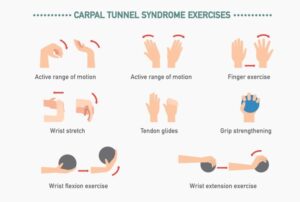
Surgery
If non-surgical methods still fail to improve the symptoms, or in the case of severe carpal tunnel syndrome, surgery may be necessary.

Such surgery will involve cutting of the transverse carpal ligament (see image above) to increase the size of the carpal tunnel and decrease the pressure on the median nerve.
| This article is part of our series on conditions that affect the joints and spine. |











